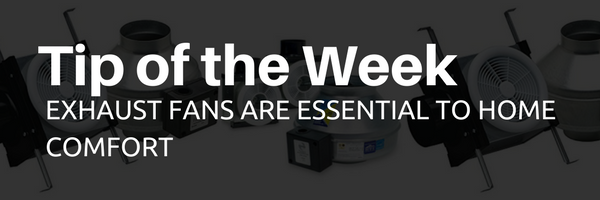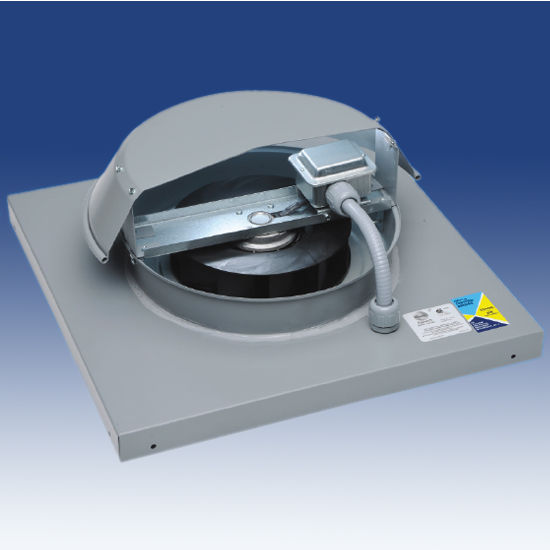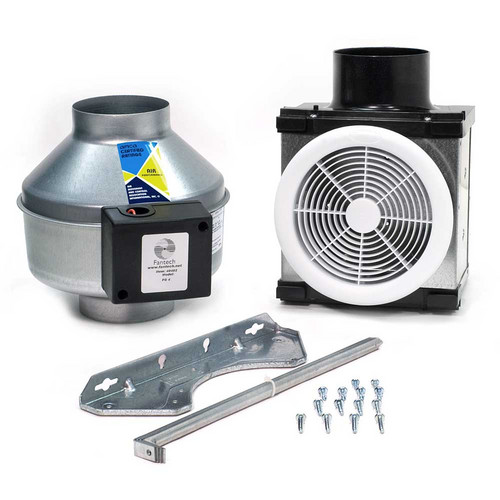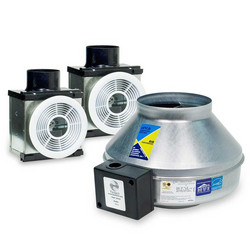
Exhaust fans in the home are very beneficial for maintaining ideal temperature and air quality. Kitchen, bathroom, or whole home systems improve ventilation, letting out the bad to better the indoor environment. In this article you will learn how they work, their benefits, and exhaust fan options for your home.
What Do Exhaust Fans Do?
Exhaust fans are used to pull excess moisture and unwanted odors out of a particular room or area. They are commonly found in bathrooms and kitchens, where moisture can build up due to activities such as showering, washing, or cooking. They provide ventilation to areas, reducing chemical fume buildup and removing other contaminants that can be harmful when breathed in.
How Do Exhaust Fans Work?
Exhaust fans pull odors, fumes, and moisture from an area of the home, venting them outdoors for removal. The fan uses a motor to turn its blades, which function to pull air out of the space. The stale, humid, or contaminated air is propelled through the exhaust vent, exiting the home.
Exhaust fans operate using electricity. They can be controlled by a wall switch, or certain models are equipped with a thermostat that signals the unit to come on when certain temperatures are reached in the area.
Benefits of Exhaust Fans
Using an exhaust fan is very beneficial for the home, indoor air quality, and comfort of occupants.
- Exhaust fans can quickly cool down areas that have become too hot from activities such as cooking or showering. Hot air is vented outdoors, reducing the temperature of the space without using the air conditioning system.
- Exhaust fans remove excess moisture that can damage the home. Condensation from hot water use can build up on walls, ceilings, and other surfaces, leading to mold growth.
- Exhaust fans improve indoor air quality by removing humidity, odors, and contaminants. They provide adequate ventilation for areas where these air quality-diminishing agents can build up. Stagnant air is vented out of the home, allowing conditioned air to fill the space.
 Types of Exhaust Fans for Homes
Types of Exhaust Fans for Homes
There are many different models of exhaust fans available for use in homes. Exhaust fans are either vented directly to the outdoors via the unit itself or dedicated duct work, or is connected to your home’s ventilation system. Wall- and ceiling-mounted exhaust fans commonly used in bathrooms as well as range hood exhaust fans in kitchens are typically vented directly to the outdoors. Inline exhaust fans are models that connect to the home’s duct work, expelling air through the home’s existing ventilation system.
Problems with Exhaust Fans
Exhaust fans are not useful to homeowners if they are not operating properly, or are not used in the first place – the two most common issues with this equipment.
- If the exhaust fan is not installed properly, heat and moisture may be escaping into other areas of the home. If the unit is not insulated correctly, the air pulled from interiors can be lost within the home’s attic, which can lead to moisture issues.
- Poor installation can cause the exhaust fan to be noisy when operating. This operating noise sometimes keeps occupants from using the exhaust fan when they should be – such as when taking a long, hot shower, cleaning using chemicals, or cooking a meal on the oven or stove. Not using exhaust fans will cause moisture issues in the home, lingering odors, and poor indoor air quality.
Need an Exhaust fan for your home or next job? Consider the Serenity Solo Bath Fan Kit!
Serenity Solo Bath Fan Kit is a quiet, energy efficient bathroom exhaust system that takes ventilation to the next level. The bath fan is designed to automatically ventilate one bathroom location matching your needs in creating a comfortable and accommodating environment.

The result is a quiet yet powerful combination designed to help protect your home from the damaging effects of humidity.
A built-in control board with multiple sensors provides error-free commissioning and simple operation. All operating features and modes can be easily configured to be enabled or disabled as desired. Humidity tracking is a demand feature that continuously monitors the %RH. Serenity® differentiates itself from other bath fan systems by knowing what the “normal” %RH is at any given time and for any given space. Proper  ventilation is then enabled when abnormal humidity conditions are detected.
ventilation is then enabled when abnormal humidity conditions are detected.
Because Serenity® knows what normal humidity levels should be prior to detecting high humidity, ventilation will continue until humidity levels are back to within normal limits, protecting your property and ensuring comfort.
Continuous ventilation is an operating mode that can also be enabled. An exhaust grille mounts in the ceiling while the fan motor mounts in a remote location away from the living area. Serenity Solo is designed for intermittent or continuous operation to meet ASHRAE Standard 62.2.
Interested in Equipping your bathroom with Fantechs Serenity Solo Bath Fan Kit or need an Exhaust fan that fits your particular application? Contact Tower Equipment’s professionals for questions, pricing, or for information today at:

Read the original article written by Will Housh here
0 Comments Leave a comment